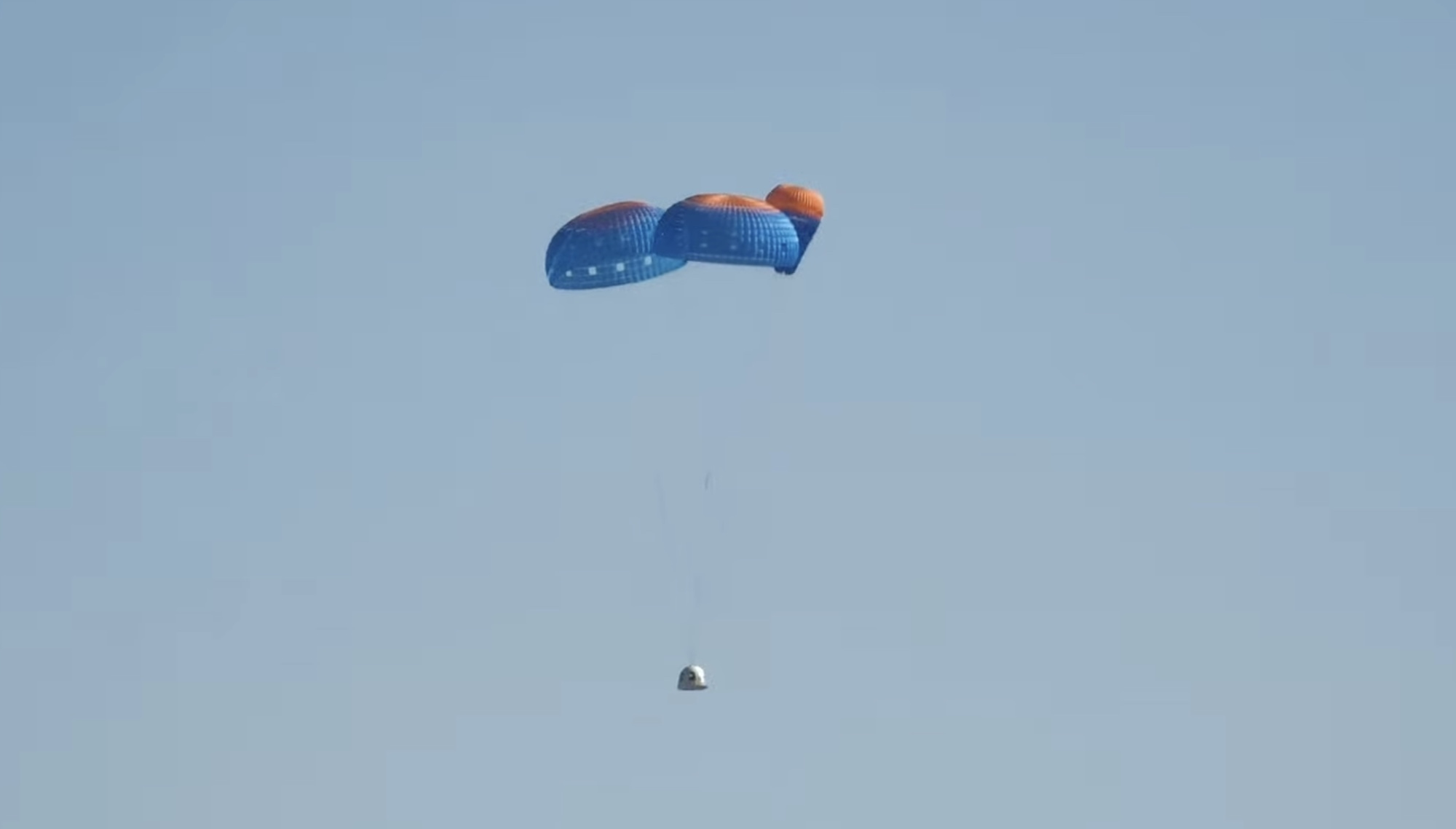Blue Origin sets date for next New Shepard flight after completing parachute investigation

WASHINGTON — Blue Origin has scheduled its next New Shepard suborbital mission for Aug. 29 after completing an investigation into a parachute that failed to fully open on the vehicle’s previous flight.
Blue Origin announced Aug. 23 that it has scheduled the next New Shepard launch, NS-26, for no earlier than Aug. 29. Liftoff of the vehicle from the company’s West Texas launch site is scheduled for 9 a.m. Eastern.
The flight will be the first for New Shepard since the NS-25 mission May 19. While that mission was a success, one of the three parachutes deployed by the crew capsule during its descent failed to fully open. The company noted at the time that the capsule is designed to land with only two parachutes.
“We identified the direct cause for the issue observed on NS-25 and implemented corrective actions that are in place for our next flight,” Blue Origin said in a statement to SpaceNews Aug. 23. “Our investigation showed the parachutes themselves were nominal and packed correctly. We focused on the dis-reefing system that transitions the parachutes from the reefed to disreefed state that did not function as designed on one of the three parachutes on NS-25.”
Blue Origin did not elaborate with the specific issue with the dis-reefing system, which controls the opening of the parachutes, or the corrective actions it took. The company stated that the capsule could safely land with just a single parachute “and has additional safety features and redundancies via our soft landing system and crew seat design.”
After the parachute incident, Blue Origin briefed NASA because its parachutes use components similar to those on commercial crew vehicles, like Boeing’s CST-100 Starliner that, at the time, was being prepared for launch on the Crew Flight Test (CFT) mission.
At a May 31 briefing about CFT, Steve Stich, NASA commercial crew program manager, said that on the New Shepard flight, a line constraining the opening of the parachute was not cut as designed, thus keeping it from opening further. He said that while Starliner’s parachutes use a similar cutter, they had not seen any problems with it during testing.
NS-26 will be the second crewed flight of New Shepard after a hiatus of more than a year and a half caused by an engine failure on a payload-only New Shepard flight in September 2022. New Shepard flew another payload-only flight in December 2023 before resuming crewed flights with NS-25 in May.
The company announced the six-person crew for NS-26 a month ago. Among the six is Rob Ferl, a University of Florida professor and advocate of commercial suborbital research who is conducting NASA-funded experiments on the flight.
Another person flying on NS-26 is Karsen Kitchen, a 21-year-old student at the University of North Carolina and daughter of previous New Shepard flyer Jim Kitchen. Blue Origin said she will be the youngest woman to cross the Kármán Line, the 100-kilometer altitude often used as the definition of space.
However, she will not necessarily be the youngest woman to go to space: 18-year-old Anastatia Mayers flew on Virgin Galactic’s Galactic 02 suborbital flight in August 2023. That flight reached a peak altitude of 88.5 kilometers, short of the Kármán Line but above the 50-mile (80.5-kilometer) mark used by the company as its demarcation of space, one also used by U.S. government agencies.
Others on NS-26 include Nicolina Elrick, a philanthropist and entrepreneur; Eugene Grin, who works in real estate and finance; cardiologist and Vanderbilt University associate professor Eiman Jahangir, whose flight was sponsored by cryptocurrency group MoonDAO; and Ephraim Rabin, an American-Israeli businessman and philanthropist.
Related
Read the original article here






